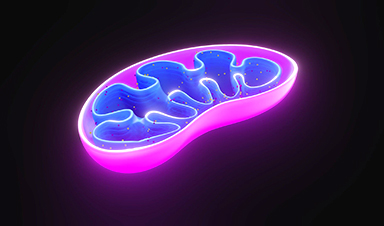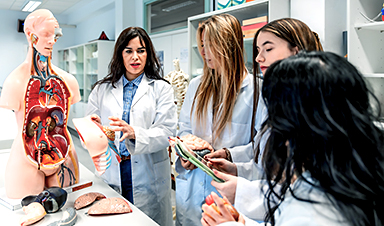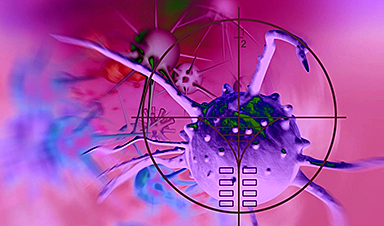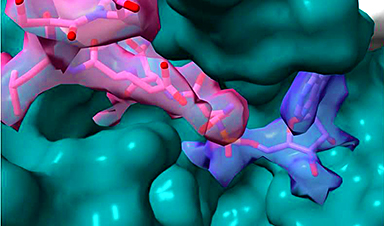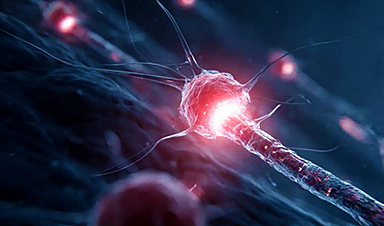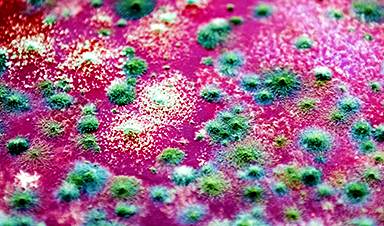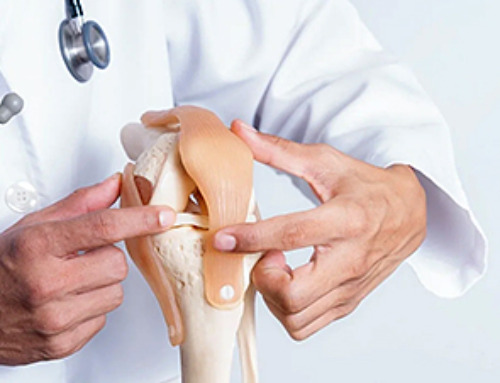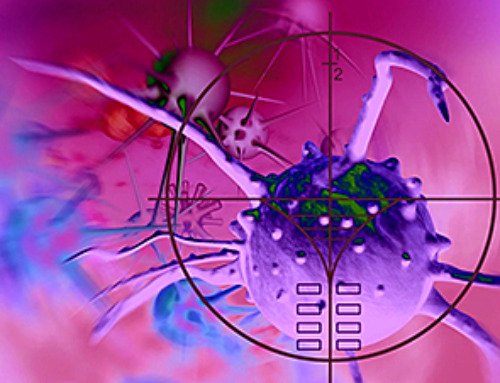Compartmentalization is one of the main strategies by which nature allows for control over many biological processes. For the proper functioning of living cells, organelles, small compartments within the cell, are essential. Researchers are working on ways to make artificial organelles that add new functionalities to cells or correct dysfunctional processes in cells, for example as a therapy for metabolic diseases. This can be achieved by using synthetic components to produce artificial organelles outside the cell or by using components made in the cell. And it’s the latter approach that Suzanne Timmermans explored for her Ph.D. research through the use of protein nanoparticles.
For her Ph.D. research, Suzanne Timmermans used protein nanoparticle to develop artificial organelles that could do new jobs in the cell. These microscopic particles are composed of viral capsids (the protein shells of viruses) to which a stabilizing protein domain was added.
Timmermans demonstrated that the nanoparticles are stable over prolonged times under conditions that are comparable to those inside cells. This is crucial for the correct functioning of an artificial organelle, as it would be very destructive if it were to disintegrate and lose its function inside the cell. In addition, the stabilizing domains enable the nanoparticles to react to their environment by changing their size. The natural processes in the cell often demonstrate such responsive behavior, so it is very important to mimic this.
Active component
To have a particular function in the cell, an artificial organelle must contain an active component. Enzymes are excellent candidates, as these protein catalysts can be produced by cells, they are naturally active inside cells, and many enzymes with all kinds of functionalities are known.
The protein nanoparticles used by Timmermans consist of an empty core. She demonstrated that it is feasible to encapsulate enzymes in that core. This was achieved both outside of cells and within living cells. Specifically, the latter finding is very promising for the development of an artificial organelle.
Beneficial effect on and inside cells
Finally, Timmermans evaluated whether the artificial organelles have a beneficial effect on and inside cells. First, she employed the activity of the encapsulated enzymes for the production of a compound that could be used by the cell to produce a certain protein. Next, she evaluated whether encapsulation inside the artificial organelle could protect the enzyme from rapid degradation by so-called proteases. This aspect of the project proved very challenging to prove, and this project is still in development.
Altogether, Timmermans’s research has advanced knowledge on the development of artificial organelles that are produced inside cells. Important challenges that still have to be overcome are the realization of the activity of the artificial organelles inside cells, the regulation of this activity by specific signals, and the detection of the organelles inside cells. By collaborating with different scientific disciplines and by employing the developments that have been made with other protein nanoparticles, Timmermans hopes that these hurdles can be overcome in the future.
News
Repurposed drugs could calm the immune system’s response to nanomedicine
An international study led by researchers at the University of Colorado Anschutz Medical Campus has identified a promising strategy to enhance the safety of nanomedicines, advanced therapies often used in cancer and vaccine treatments, [...]
Nano-Enhanced Hydrogel Strategies for Cartilage Repair
A recent article in Engineering describes the development of a protein-based nanocomposite hydrogel designed to deliver two therapeutic agents—dexamethasone (Dex) and kartogenin (KGN)—to support cartilage repair. The hydrogel is engineered to modulate immune responses and promote [...]
New Cancer Drug Blocks Tumors Without Debilitating Side Effects
A new drug targets RAS-PI3Kα pathways without harmful side effects. It was developed using high-performance computing and AI. A new cancer drug candidate, developed through a collaboration between Lawrence Livermore National Laboratory (LLNL), BridgeBio Oncology [...]
Scientists Are Pretty Close to Replicating the First Thing That Ever Lived
For 400 million years, a leading hypothesis claims, Earth was an “RNA World,” meaning that life must’ve first replicated from RNA before the arrival of proteins and DNA. Unfortunately, scientists have failed to find [...]
Why ‘Peniaphobia’ Is Exploding Among Young People (And Why We Should Be Concerned)
An insidious illness is taking hold among a growing proportion of young people. Little known to the general public, peniaphobia—the fear of becoming poor—is gaining ground among teens and young adults. Discover the causes [...]
Team finds flawed data in recent study relevant to coronavirus antiviral development
The COVID pandemic illustrated how urgently we need antiviral medications capable of treating coronavirus infections. To aid this effort, researchers quickly homed in on part of SARS-CoV-2's molecular structure known as the NiRAN domain—an [...]
Drug-Coated Neural Implants Reduce Immune Rejection
Summary: A new study shows that coating neural prosthetic implants with the anti-inflammatory drug dexamethasone helps reduce the body’s immune response and scar tissue formation. This strategy enhances the long-term performance and stability of electrodes [...]
Scientists discover cancer-fighting bacteria that ‘soak up’ forever chemicals in the body
A family of healthy bacteria may help 'soak up' toxic forever chemicals in the body, warding off their cancerous effects. Forever chemicals, also known as PFAS (per- and polyfluoroalkyl substances), are toxic chemicals that [...]
Johns Hopkins Researchers Uncover a New Way To Kill Cancer Cells
A new study reveals that blocking ribosomal RNA production rewires cancer cell behavior and could help treat genetically unstable tumors. Researchers at the Johns Hopkins Kimmel Cancer Center and the Department of Radiation Oncology and Molecular [...]
AI matches doctors in mapping lung tumors for radiation therapy
In radiation therapy, precision can save lives. Oncologists must carefully map the size and location of a tumor before delivering high-dose radiation to destroy cancer cells while sparing healthy tissue. But this process, called [...]
Scientists Finally “See” Key Protein That Controls Inflammation
Researchers used advanced microscopy to uncover important protein structures. For the first time, two important protein structures in the human body are being visualized, thanks in part to cutting-edge technology at the University of [...]
AI tool detects 9 types of dementia from a single brain scan
Mayo Clinic researchers have developed a new artificial intelligence (AI) tool that helps clinicians identify brain activity patterns linked to nine types of dementia, including Alzheimer's disease, using a single, widely available scan—a transformative [...]
Is plastic packaging putting more than just food on your plate?
New research reveals that common food packaging and utensils can shed microscopic plastics into our food, prompting urgent calls for stricter testing and updated regulations to protect public health. Beyond microplastics: The analysis intentionally [...]
Aging Spreads Through the Bloodstream
Summary: New research reveals that aging isn’t just a local cellular process—it can spread throughout the body via the bloodstream. A redox-sensitive protein called ReHMGB1, secreted by senescent cells, was found to trigger aging features [...]
AI and nanomedicine find rare biomarkers for prostrate cancer and atherosclerosis
Imagine a stadium packed with 75,000 fans, all wearing green and white jerseys—except one person in a solid green shirt. Finding that person would be tough. That's how hard it is for scientists to [...]
Are Pesticides Breeding the Next Pandemic? Experts Warn of Fungal Superbugs
Fungicides used in agriculture have been linked to an increase in resistance to antifungal drugs in both humans and animals. Fungal infections are on the rise, and two UC Davis infectious disease experts, Dr. George Thompson [...]
